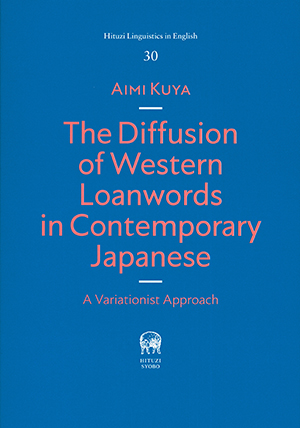2019年2月刊行

Hituzi Linguistics in English No.30
The Diffusion of Western Loanwords in Contemporary Japanese:
A Variationist Approach
Aimi Kuya(久屋愛実著)
菊判上製カバー装 248頁 定価12600円+税
ISBN 978-4-89476-949-6
 |
Hituzi Linguistics in English No.30The Diffusion of Western Loanwords in Contemporary Japanese:
|


